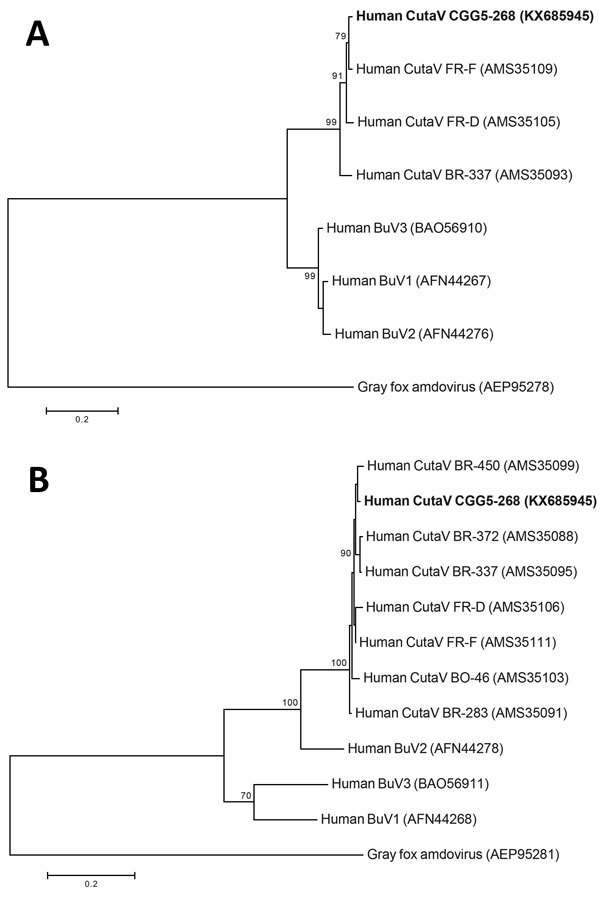Volume 23, Number 2—February 2017
Letter
Cutavirus in Cutaneous Malignant Melanoma
Figure

Figure. Phylogenetic analysis of human cutaviruses (CutaV) and bufaviruses (BuV) based on the full nonstructural protein 1 (A) and viral protein 1 (B) amino acid sequences. The trees were constructed by the maximum-likelihood method with 100 bootstrap replicates. Gray fox amdovirus was used as an outgroup. Bold indicates novel CutaV strain (CGG5–268) from this study. Scale bars indicate amino acid substitutions per position.
1These authors contributed equally to this article.
Page created: January 18, 2017
Page updated: January 18, 2017
Page reviewed: January 18, 2017
The conclusions, findings, and opinions expressed by authors contributing to this journal do not necessarily reflect the official position of the U.S. Department of Health and Human Services, the Public Health Service, the Centers for Disease Control and Prevention, or the authors' affiliated institutions. Use of trade names is for identification only and does not imply endorsement by any of the groups named above.